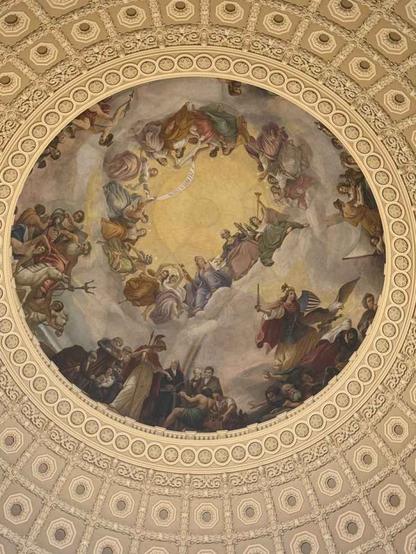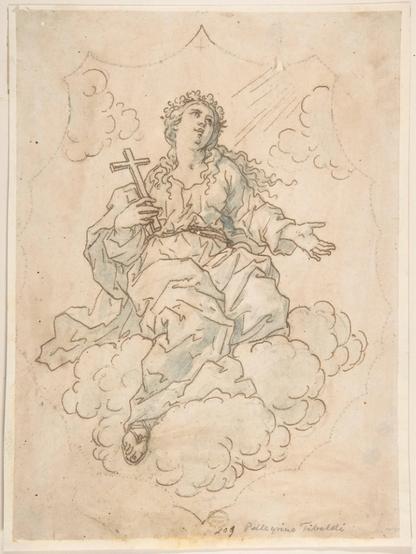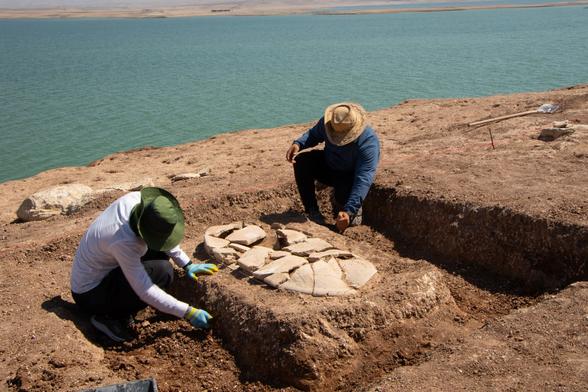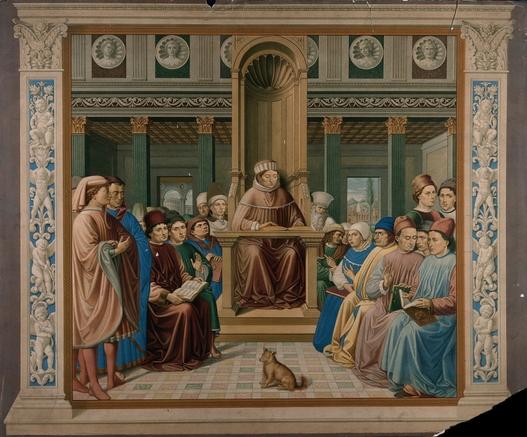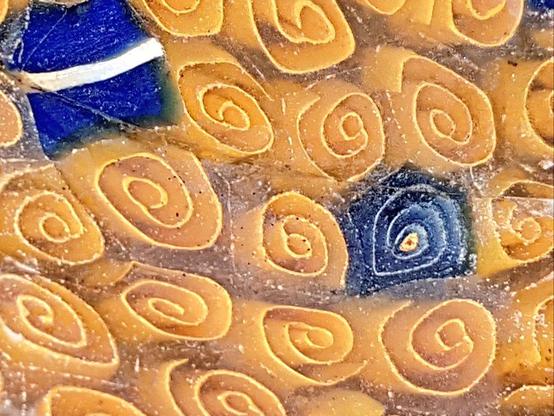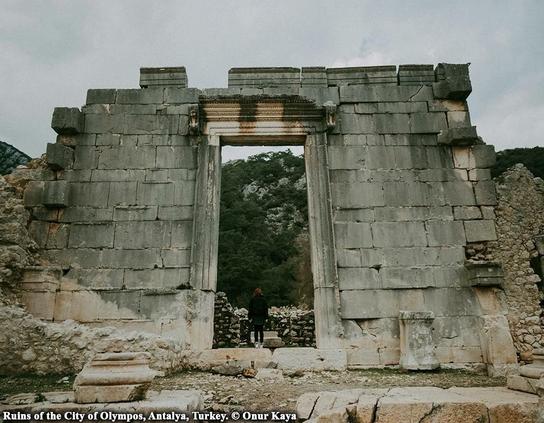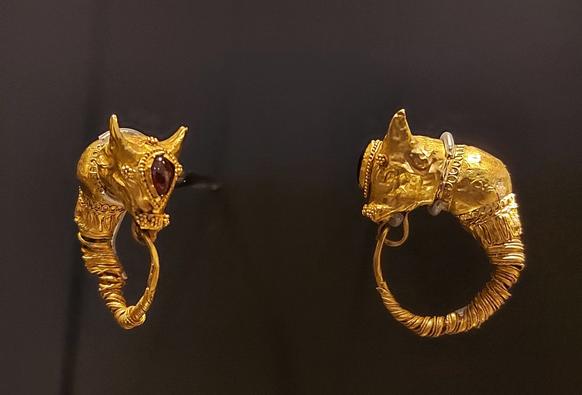Manichaeism
This is a former world religion founded in the 3rd century CE by the Parthian prophet Mani in the Sasanian Empire. An adherent of Manichaeism was called a Manichaean, Manichean, or Manichee.
Manichaeism taught a complex dualistic cosmology describing the struggle between a good spiritual world of light, & an evil material world of darkness. Through an ongoing process that takes place in human history, light is gradually removed from the world of matter & returned to the world of light, whence it came.
Mani’s teaching was intended to combine, succeed, & surpass the teachings of Platonism, Christianity, Zoroastrianism, Rabbinic Judaism, Gnostic movements, Ancient Greek religion, Babylonian & other Mesopotamian religions, & mystery cults. Manichaeism reveres Mani as the final prophet after Zoroaster, the Buddha, & Jesus.
This religion thrived between the 3rd & 7th centuries, & at its height was one of the most pervasive religions in the world. Manichaean churches & scriptures existed as far east as China & as far west as the Roman Empire.
Before the spread of Islam, it was briefly the main rival to early Christianity in the competition to replace polytheism. Under the Roman Dominate, Manichaeism was persecuted by the Roman State & was eventually stomped out in the Roman Empire.
The religion was present in West Asia into the Abbasid Caliphate period in the 10th century. It was also present in China despite gradually strict bans under the Tang Dynasty & was the official religion of the Uyghur Khaganate until its collapse in 830.
It experienced a resurgence under the Mongol Yuan Dynasty during the 13th & 14th centuries. However, it was consequently banned by the Chinese emperors. Manichaeism there became into Buddhism & Taoism.
Some historic Manichaean sites still exist in China, including the Temple of Cao’an in Jinjiang, Fijian, & the religion may have influenced later movements in Europe including Paulicianism, Bogomilism, & Catharism.
Mani was an Iranian born in 216 CE in or near Ctesiphon (now al-Mada’in in Iraq) in the Parthian Empire. According to the Cologne Mani-Codex, Mani’s parents were members of the Jewish Christian Gnostic sect known as the Elcesaites.
Mani composed 7 works, 6 of which were written in the late-Aramaic Syriac languages. The 7th, the Shabuhragan, was written by Mani in Middle Persian & he gave it to Sasanian emperor Shapur I. There’s no proof that Shapur I was a Manichaean, he did tolerate the spread of Manichaeism & didn’t persecute the religion or its adherents within his empire’s borders.
Manichaeism won the support of many high-ranking political figures. With the help of the Sasanian Empire, Mani began missionary trips. After failing to win the favor of the next generation of Persian royalty & experiencing the disapproval of the Zoroastrian clergy, Mani reportedly died in prison awaiting his execution by the Persian emperor Bahram I. His death date is estimated between 276-277 CE.
Mani believed that the teachings of Jesus, Buddha, & Zoroaster were incomplete. He’s believed his revelations were for the entire world, calling his teachings the “Religion of Light.”
Manichaean writings suggest that Mani received revelations when he was 12 years old & again when he was 24. Over this period, Mani grew dissatisfied with the Elesaites, a Jewish Christian Gnostic sect, that he was born into.
Mani taught how the soul of a righteous individual returns to Paradise upon dying. But the souls of a person who persisted in things of the flesh – fornication, procreation, possessions, cultivation, harvesting, eating of meat, drinking of wine – is condemned to rebirth in a succession of bodies.
Mani began preaching at an early age & was possibly influenced by contemporary Babylonian-Aramaic movements like Mandaeism, Aramaic translations of Jewish apocalyptic works similar to those found at Qumran (Book of Enoch literature), & by the Syriac dualist-Gnostic writer Bardaisan, who lived a generation before Mani. With the discovery of the Mani-Codex, it also became clear that he was raised in the Jewish Christian sect of the Elcasaites & possibly influenced by their writings.
According to biographies preserved by ibn al-Nadim & Persian polymath al-Biruni, Mani received as a youth from a spirit. Whom he (Mani) would later call his “Twin,” Syzygos (“spouse, partner,” in the Cologne Mani-Codex), “Double,” “Protective Angel,” or “Divine Self.” This spirit taught him wisdom that he then developed into a religion.
It was his “twin” who brought Mani to self-realization. Mani claimed to be the Paraclete of the Truth promised by Jesus in the New Testament. Paraclete is a word used, in Christian theology, to refer to the Holy Spirit & is translated as “advocate,” “counsellor,” or “helper.”
Jesus, in Manichaeism, possessed 3 separate identities: Jesus the Luminous, Jesus the Messiah, & Jesus patibilis, or the Suffering Jesus.
As Jesus the Luminous, his primary role was as supreme revealer & guide. It was Jesus who woke Adam from his slumber & revealed to him the divine origins of his soul & its painful captivity by the body & mixture with matter.
Jesus the Messiah was a historical being who was a prophet of the Jews & a forerunner of Mani. Manichaeans believed that he was wholly divine, & he never had a human birth. The Christian doctrine of a virgin birth was regarded as obscene. Since Jesus was the Light of the World, where was this light, they reasoned, when Jesus was in the womb of the Virgin? Jesus the Messiah was truly only born at his baptism. It was on this occasion that the Father openly acknowledged his sonship. The suffering, death, & resurrection of this Jesus were in appearance only & a prefiguration of Mani’s own martyrdom.
The pain suffered by the imprisoned Light-Particles in the whole of the visible universe, on the other hand, was real & immanent. This was symbolized by the mystic placing of the Cross whereby the wounds of the passion of our souls are set forth. On this mystical Cross of Light was suspended the Suffering Jesus (Jesus patibilis) who was the life & salvation of man. This mystica crucifixio was present in every tree, herb, fruit, vegetable, & even stones & the soil. This constant & universal suffering of the captive soul is exquisitely expressed in 1 of the Coptic Manichaean Psalms.
St. Augustine of Hippo noted that Mani declared himself to be an “apostle of Jesus Christ.” Manichean tradition is also noted to have to have claimed that Mani was the reincarnation of religious figures from previous eras such as the Buddha, Krishna, & Zoroaster, in addition to Jesus Himself.
One-Time Monthly YearlyMake a one-time donation
Make a monthly donation
Make a yearly donation
Choose an amount
$1.00 $5.00 $10.00 $1.00 $5.00 $10.00 $5.00 $10.00 $15.00Or enter a custom amount
$Your contribution is appreciated.
Your contribution is appreciated.
Your contribution is appreciated.
DonateDonate monthlyDonate yearly
#10thCentury #13thCentury #14thCentury #216CE #276CE #277CE #3rdCentury #3rdCenturyCE #7thCentury #830 #AbbasidCaliphate #Adam #alBiruni #alMadaIn #AncientGreek #Babylon #BahramI #Baptism #Bardaisan #Bogomilism #BookOfEnoch #Buddha #Buddhism #CaoAn #Catharism #China #Christianity #Cologne #Coptic #Cosmology #Cross #Ctesiphon #Dualistic #Elcesaites #Emperors #Europe #Fijian #Gnostic #GodTheFather #Hellenistic #HolySpirit #ibnAlNadim #Iran #Iraq #Islam #Jesus #JesusTheLuminous #JewishChristianGnostic #Jews #Jinjiang #Krishna #LateAramaicSyriac #LightParticles #Mani #ManiCodex #Manichaean #Manichaeism #Manichean #Manichee #Marcionism #Mesopotamia #Messiah #MiddlePersian #Mongol #MysteryCults #MysticaCrucifixio #NewTestament #ParacleteOfTheTruth #Paradise #Parthian #ParthianEmpire #Patibilis #Paulicianism #PersianEmperor #Platonism #Polymath #Prophet #Qumram #RabbinicJudaism #ReligionOfLight #RomanDominate #RomanEmpire #RomanState #SasanianEmperor #SasanianEmpire #Shabuhragan #ShapurI #StAugustineOfHippo #SufferingJesus #Syzygos #TangDynasty #Taoism #twin #UyghurKhaganate #VirginBirth #VirginMary #WestAsia #YuanDynasty #Zoroaster #Zoroastrianism

